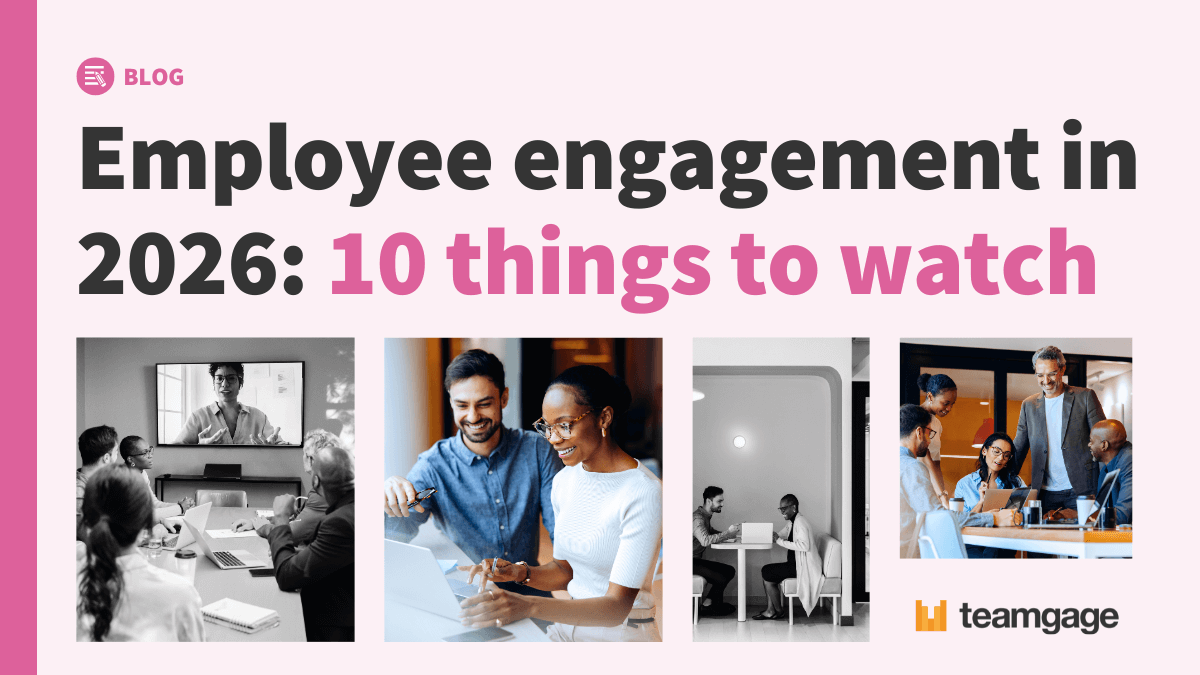60 team engagement ideas and activities to implement now

Keeping teams engaged has never been more important. When a team is engaged, it enhances the sense of trust and teamwork. It develops an emotional commitment to each other's wellbeing and performance, which becomes a driving force to achieve strategic goals.
What is team engagement?
I like to define team engagement as a team combining their efforts to cohesively and positively support each other to perform and achieve a common goal. This should be promoted in an environment that enables equal participation and idea sharing, where people feel motivated to give their best.
So what is the difference between team engagement and employee engagement?
Let’s imagine the reasons individuals feel engaged at work. Could they be for very different reasons? They like the flexibility as it fits with their family. They like the wages. They like the challenge of the role. They are aligned with values. For some reason they feel connected to the organisation.
Imagine a rowing boat with 10 people rowing towards the finish line. Even if they are rowing for the same organisation, they are rowing for different reasons or outcomes and may not be rowing in the same direction or putting in the required effort.
Now think about team engagement. If the employees have team engagement they want to perform as a team towards the organisation goals. They still may have their own strengths in performance yet they are engaged as a team and rowing in the same direction to achieve the same outcome.

Team engagement is communication, collaboration, understanding the team outcome within the organisation; not just an employee engaged in their own way with the organisation.
60 ways to engage your team
1. Have a purpose, vision and values that are communicated with the team, preferably developed with the team
2. Ask them for ideas
3. Hold regular team meetings
4. Have job descriptions
5. Have performance reviews – can be informal, must be purpose driven, positive and motivating
6. Collaborate on KPIs
7. Create project teams or focus groups
8. A suggestion box
9. A positivity board – what was a great thing that happened today
10. Allow creativity and sharing of ideas
11. Know their strengths and use them
12. Create joint goals
13. Have accountability buddies – hold each other accountable
14. Celebrate the wins and successes
15. Recruit on strengths and attitude not necessarily skills
16. Ask questions:
- How can I help you?
- What do you need from me or another team member?
- Tell me your plan and purpose. How are we doing?
- What thoughts do you have to make it even more successful?
17. Be authentic, be involved, be receptive, be energised, be positive, be approachable
18. Pick “champions” to help you engage others
19. Follow up with people always, whether successful or not
20. Have processes, guidelines and boundaries
21. Write materials that have inspiring language that create engagement. For example “Business plan” could be “our guide to success”. A position description could be “celebrate your role”
22. Benchmark against companies that engage well or have great retention rates – ie Google
23. Allow flexibility to think outside the square
24. Consider all ideas – active constructive conversations
25. Expect people to exceed expectations and they often will. (Expect them to fail and they often will)
26. Follow the Losada principle and ensure you give more positive feedback than negative. Research shows 5:1 (positive:negative) is ideal
27. Keep some fun in the office. For example Camp Quality have “Fun therapy” sessions, called by any team member at any time – it could be a joke everyone stops to hear, vibrant music, 10 star jumps. If they can do it in their environment (support kids with cancer) then anyone can
28. Keep learning – reading, training, implementing
29. Lead by example
30. Make organisational engagement a priority
31. Identify the key motivators (or drivers) of your team
32. Conduct an anonymous engagement feedback programme
33. Have an employee of the month
34. Dedicate resources to it – training, team get togethers, surveys, innovation strategies
35. Communicate! All the time. Keep people “in the loop”
36. Measure progress – celebrate success and learn from challenges
37. Understand their WIIFM (What’s in it for me)
38. Trust them, guide them and trust them more
39. Listen and ask more questions
40. Understand people’s feelings around change – they are all different as are their personal values
41. Do something great for someone everyday
42. Notice great things about people – it may be the way they do something, the results of their work, what they wear, etc.
43. Recognise emotions and don’t be afraid to talk about the negative ones and the positive ones
44. With remote team, increase the frequency of communication – Communicate, Communicate. Communicate.
45. Use all forms of communication, especially with remote teams – web, video, newsletters, surveys, teleconferences, intranet, notes, emails, discussions
46. Explain your purpose (the “why”) and ask questions to ensure understanding
47. Encourage work / life balance – allow flexibility where possible
48. Create a coaching mindset and coaching environment
49. Use technology
50. Have a reward and recognition programme
51. Have Employee Assistance Programmes or access to advice and counselling
52. Invest in your people
53. Foster optimism, plays games, inspire fun
54. Manage your emotions well – get some emotional intelligence training
55. Be honest – don’t lie (Bending the truth means lying!)
56. Care and praise
57. Create a fantastic environment
58. Say hello and goodbye everyday
59. Smile
60. Ask people how they are and mean it, if you sense an inauthentic response, call them on it and listen
Learn more how Teamgage can help your team.
Janet Langley is an experienced leadership coach and team performance development specialist, having worked with thousands of people, teams and organisations to improve team engagement, people development and business success globally.








